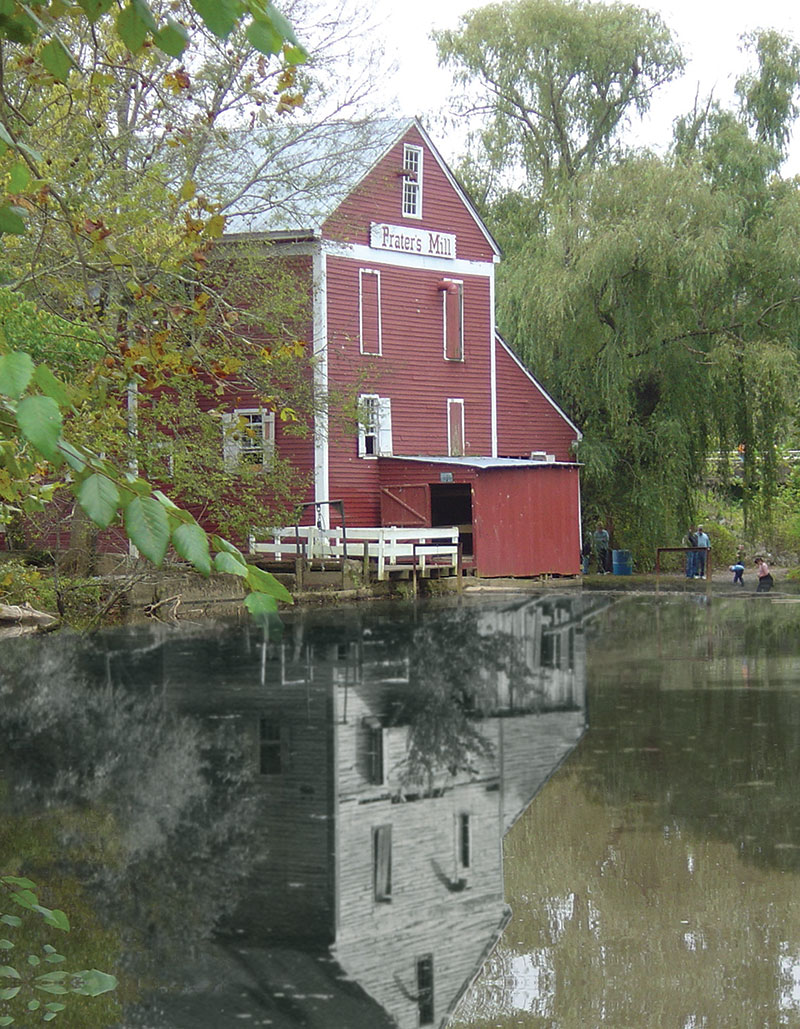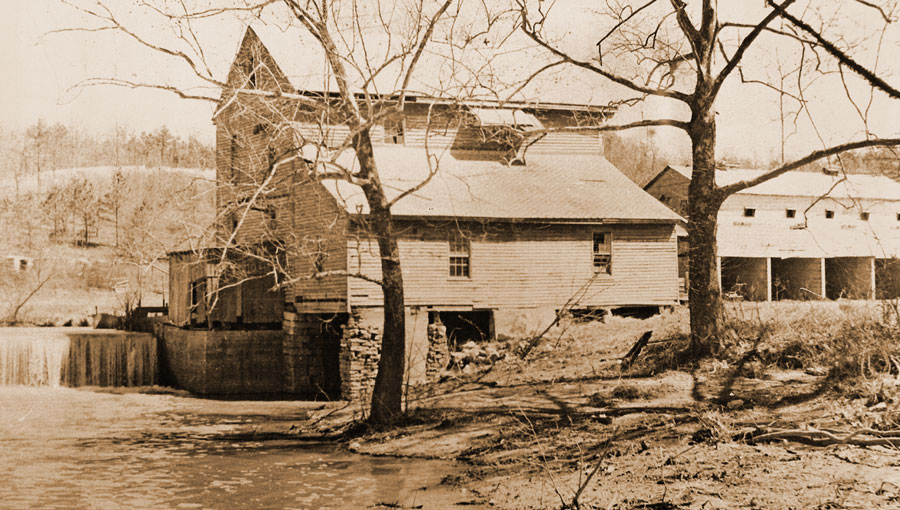History of Prater’s Mill

In 1855, pioneer businessman John Pitner (1800-1855) built the gristmill, a sawmill and the miller’s house. After his death, his son Benjamin Franklin Prater (1826-1893) inherited the site and led the development of a family-owned integrated mill complex including a blacksmith shop, country store, cotton gin and housing for workers. In the 1890s, Ben’s son William “Bill” Howard Prater (1866-1941) installed a flour milling system in the grist mill and expanded the family businesses to Dalton with two cotton gins and a feed store.
The gristmill has a Leffel turbine as a means of power. The mill operates by an ingenious set of mechanisms. The turbine is situated at the bottom of a 9-ft. deep pool called a forebay. A floodgate in the dam is raised to allow the water behind the dam to fill the forebay. A throttle wheel inside the mill is activated which turns gears to operate 8 spider arms on the turbine. The spider arms gradually open 8 gates around the outer rim of the turbine. As the gates open, water from the forebay rushes into the turbine, spinning its vanes and turning the turbine shaft.
As Prater prospered, he added more sophisticated machinery and processes to the mill bringing many people to the site from miles around. Although there were numerous mills in the county, people came from great distances to Prater’s Mill where they could have their cotton ginned and horses shod while waiting for their grain to be processed. In addition, Prater provided a hostelry (Inn) for those who had traveled more than half a day’s journey. Prater’s Mill was also a commercial flour mill. As Albert Duncan, a Prater’s Mill miller, said, “Corn mills were a few miles apart. Flour mills were many miles (apart).”
In the mid- and late-19th century, farmers frequently arrived late in the day and spent the night with their wagons lined up in the yard, waiting for the mill to open and hoping to make it back home before dark the next day. Since most farmers had very little cash, the miller was paid by means of a toll. The toll was a percentage, usually 10%, of the grain that the farmer brought to the mill. The farmer went home with 90% of his corn harvest converted to cornmeal. He left I0% as his toll payment for the miller. The miller’s income came from grinding the toll grain and selling the cornmeal to the general public.

The mill remained in the Prater family and was operated by family millers until 1954, when it was sold to the Church of God of the Union Assembly. The Church cut the shaft to the Davis turbine and installed a gasoline engine for power to run the mill to increase efficiency. In 1963, the Church sold its holdings to Dalton Asphalt Incorporated. The Boring family who owned the company donated the Mill property to Whitfield County in 2010.
Prater’s Mill was one of the most prosperous in the region as it was an integrated mill complex defined as a grist and flour mill as well as providing other services including blacksmithing, cotton ginning, sawmilling, a general store, and post office. Prater’s Mill is valuable as a surviving example of one of America’s oldest industries. Its array of extant machinery is astounding, as well as the wooden structure which houses it. Although no longer used daily, the machinery is still in excellent condition, requiring only the skill and knowledge of an experienced miller. The limited exhibition of milling processes at the Country Fair provides a unique opportunity for observation of an old industry in its original setting. Prater’s Mill is the only remaining gristmill, out of thirty-two, which once thrived in Whitfield County.
